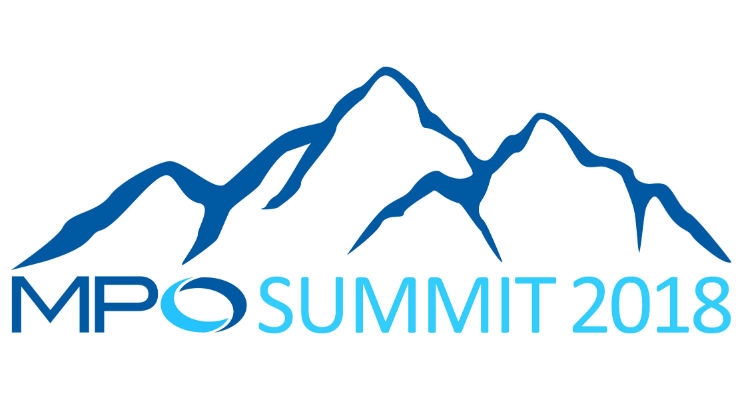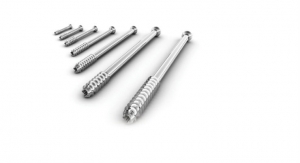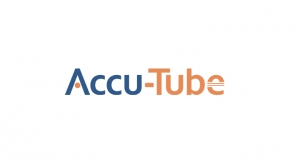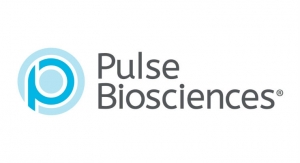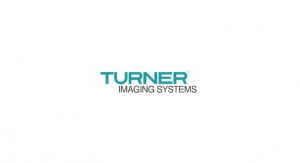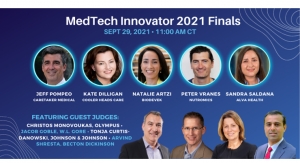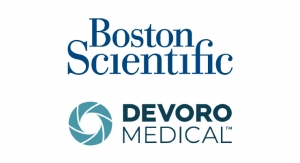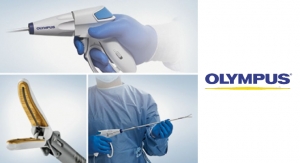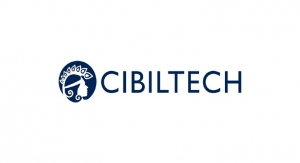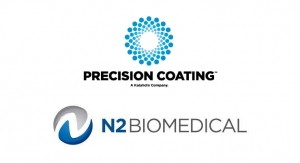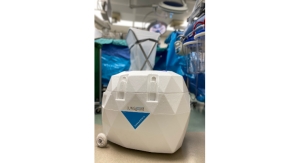Michael Barbella, Managing Editor10.11.18
State of the Medtech Industry (9 a.m.- 9:45 a.m.)
Speaker: Anthony S. Freeman, president, A.S. Freeman Advisors LLC
Large scale trends – the tectonic forces shaping the industry over the next three to 10 years. Different constituencies in healthcare, including OEMs and suppliers, are in the process of risk transfers.Risk – not meant in the everyday definition. Economic risk= uncertainty with opportunities for loss or gain. In the medical device world, roles are shifting in response to new incentives and penalties. The ability to manage through risk transfers will make or break companies in the device industry.
What keeps device OEM CEOs up at 3 a.m.?
Two obvious issues – favorable demographics, and growth of healthcare in developing countries. Let’s focus on significant but less discussed risks: Changing reimbursement strategies in the OEMs’ most lucrative market, and fewer more powerful customers.
America First – The U.S. is the world’s largest and richest markets for devices. U.S. spends about 18 percent of GDP on healthcare. Spend one-third more than most developed and developing nations on healthcare. May rise to over 20 percent by 2022 (absolutely unprecedented in human history). The U.S. represents 40 percent of the global device market – the biggest market for devices. Through rich reimbursements the U.S. subsidizes device development for the rest of the world. Devices must be designed to succeed in the U.S. market, under U.S. market conditions.
Risk No. 1 – Value-Based Reimbursement
Let’s start with what it isn’t: We all grew up with fee-for-service. Economically, this fee-for-service rewards activity…not outcomes. As the U.S. healthcare spending crossed 15 percent of GDP, major payers looked for new approaches. The more you consume, the more money you make. As GDP went up, many people began asking, “how are we going to pay for this?” Have to come up with a new model for how we pay people.
There are several forms of VBR, but most common is bundled payment. The healthcare provider receives a single payment for all services and products. More efficiently the service is delivered, the more money the providers keep. Complications, re-admittances, extra follow-ups, longer therapies all cost the provider money. This creates incentive for effective medicine. Those who prosper under the system are the ones who get people healthy and on their way instead of coming back to the E.R.
VBR were 23 percent of reimbursements in 2016, projected to rise to 50 percent by 2020. Risk is being transferred from payers to the providers and physicians. How does this impact the device world? In a VBR world, if one device outperforms another, physicians and providers have economic incentives for using the superior device. OEMs are increasingly going to market stressing outcome and economic benefits of their products. Less capable devices are dropped from order lists. Risk is shifting from providers/physicians to OEMs. That risk shift is showing up in OEM strategies. OEMs are accepting the risk, reinforcing where in markets they can win and retreating in those where they will lose.
Risk No. 2 – Fewer, More Powerful Customers
The days of independent hospitals in the U.S. are over. 68 percent of American hospitals are system-affiliated, up from 51 percent in 1999. No more purchasing departments or sophisticated buying groups. Other nations have relied on centralized purchasing to some degree.
This means OEMs have fewer people to call on when they go into hospitals. Putting more chips on the table.
Fewer, more powerful customers. The days of the independent physician are numbered. Over 67 percent work for hospitals or corporate practices. Fewer points of sale in corporate or hospital-affiliated practices. Buying power is concentrated now.
Response No. 1 – Consolidation of Large OEMs via M&A
Large OEMs have turned to M&A to acquire strong positions in specific areas of care. Majors buying majors. Similarly, non-strategic units are shed. Adjusting risk in a changing world. Discard and drawing new cards to try and strengthen their hands. J&J bought Abbott Medical, sold of Codman Neuro, LifeScan, and Cordis.
Response No. 2 – From Devices to Care Systems
Rarely can a single device redefine a level of care. A move from standalone products to product families. Product families to product service packages. Taking over hospital departments and sometimes, hospitals (Fresenius, Medtronic ORMS, Stryker Endo “operating room of the future”). This is the model that’s coming. Medtronic has over $1 billion in contracts to operate catheter labs – take it over completely. Hospital only gives them the space. When there’s a bias, go with Medtronic. Services are increasingly being wrapped around devices. At its most extreme example, a hospital becomes a healthcare mall, a real estate and marketing business with care outsourced. OEMs are taking over care to accept outcome risk.
Response No. 3 – New Classes of Digital Devices and Ecosystems
For all the magnificent technology in medical devices, they are among the last devices to become digitally aware. Devices are increasingly becoming single points in a digital ecosystem. Example – 3M intelligent control inhaler. 1956 – first mechanical inhaler; 1993 – first breath-controlled inhaler; 2016 – “smart inhaler.” Reminds patient to take medicine, always delivers correct dosage…
Better outcomes through digitization. Scope of asthma problem in the U.S. Average hospital stay of 3.6 days for 439,000 hospitalizations/year. 1.8 million ER visits annually, 14.2 million physician visits, estimated costs of over $50 billion per year in direct and indirect costs for asthma care. Reason – people don’t take their medication.
What About the Supply Chain?
OEMs are transferring manufacturing risk to the supply chain. Everything can be outsourced, but to whom? From the OEMs perspective, it’s better to have larger, more stable suppliers – risk is more effectively mitigated. There is not one device that cannot be outsourced. Risk is best mitigated by going to one large supplier, they want one neck to choke. Beginning to affect who gets business. Rise of the global contract manufacturer in the device space. Strategies for managing manufacturing transference risk.
Rise of the Global CMs – Eight of the 10 largest medical CMs are global CMs with roots in electronics manufacturing. They are willing to take on the risks of greater LCC sourcing, and they are used to gross margins in high single/low double digits. If they can’t make something, they are more than happy to source it, and they wrote the book on global sourcing. Willing to go to low cost countries, and there is economic incentive to do it.
Watershed event on what is happening: On Aug. 2, J&J announced progress on its restructuring of the Medical Devices business unit. Reduced 5 percent of workforce (2,600 jobs). Formed a strategic collaboration with Jabil to produce a range of products for DePuy Synthes and Ethicon Endo. Got people scratching their chins. Jabil announced it would take over 14 J&J sites (medical device manufacturing). J&J projects savings between $600 million and $800 million annually by 2022. This is a model we have not seen before. J&J transferring manufacturing and facility risk to Jabil, a global contract manufacturer.
Four Rules for Prospering:
- Unique knowledge – extraordinary cabability that you can demonstrate that is hard to get. Says – give the work to us because we know what we’re doing and we have knowledge that nobody else has.
- Speed to market – if you can offer a more nimble, more agile team that brings project to completion faster, you will have opportunity to compete against larger organizations.
- Right the first time – no extra at bats anymore. If you can’t make it right and deliver it right the first time, you won’t last in the position you hope to be in.
- Ability to support digital devices – Electronics, software, systems. Will be a feather in your cap. It may not be right for everyone, but for global OEMs, this is their bread and butter.
Regulatory Transitions—Navigating the EU MDR, Brexit, and More (9:45 a.m.- 10:30 a.m.)
Speaker: Kim Trautman, Executive Vice President—Medical Device International Services, NSF International
Let’s take a global perspective. You are affected by global regulatory systems.Medical Device Single Audit Program (MDSAP) – international consortium of countries dedicated to pooling technology, resources, and services to improve the safety and oversight of medical devices on an international scale in an Audit and Assessment program.
Important that you understand what is going on with MDSAP because it has long-reaching fingers. Depending on how J&J-Jabil work their partnership, Jabil may be a medical device manufacturer. Interesting how different companies are taking on regulatory risk. Samsung has been making medical products for several years, Google owns medical device manufacturers, and Apple is front and center saying I am a medical device manufacturer with the Apple Watch. All of this cascades down.
Manufacturers have been complaining for years about all the different regulatory audits they have to undergo, but regulators are stretched thin, too. Regulators have to optimize their resources. Mission of MDSAP is to jointly leverage regulatory resources to manage an efficient, effective, and sustainable single audit program focused on the oversight of medical device manufacturers. The International Medical Device Regulators Forum (IMDRF) recognizes the value in developing a global approach to auditing and monitoring the manufacturing of medical devices to ensure safe medical devices. MDSAP started in this forum.
Regulatory agencies of Australia, Brazil, Canada, U.S., signed statement of cooperation in MDSAP in November 2012. As of June 2015, Japan joined the effort. Have these five regulators accepting the outcome of a single audit (either in the form of certification – Canada – or an audit report). In Spring 2014, World Health Organization Diagnostic Prequalification Program, European Union joined as observers. Really an approved supplier program.
Europe agreed to become an observer, going through a lot on its own (Medical Device Directive).
MDSAP could be third party system or involve regulatory inspectorates. Most of program is based off third-party systems. Auditing organization audits and certifies manufacturers. This is not just an audit for a quality management system. Also includes Brazilian Good Manufacturing Practices, Japanese requirements, and FDA quality management system – a very big amalgamation of requirements. Biggest thing the regulators are trying to do is ensure it is transparent and robust; program is for the auditing organizations, not for the manufacturers. Tons of documents on the website (imdrf.org).
Timeline: To make MDSAP a successful program, had to find an incentive for industry. Incentive is – Brazilian market was essentially a large market that was untouched. Help industry get into the market faster. That was the carrot on the stick. Health Canada program was 20 years old, there was a lot it wanted to revise, Health Canada has made MDSAP mandatory, deadline is January 2019. Anybody putting a medical device on the Canadian market must have MDSAP audit as part of their certification application.
This concept of audits and regulators converging has been going on for 20-plus years. 2012-13 was pre-pilot; 2014-16 MDSAP Pilot; 2017 – Transition; 2019 – Takes Effect.
ISO 13485 Revision – first standard written in 1996, the second in 2003, latest is 2016. Objective – to improve clarity of the requirements, increase harmonization of QMS regulatory requirements; increase medical device manufacturers’ ability to meet customer requirements. This new revision changes scope – for anyone who touches a medical product over the life of that product. Three-year transition period (typical); now there is no choice, there are no 13485:2003 recertifications issued. All 13485:2003 certificates expire on Feb. 28, 2019.
MDSAP and ISO 13485:2016 were designed to line up. Intent was always that Health Canada would make MDSAP transition in the three years manufacturers have to transition to 13485:2016.
Brexit – there is uncertainty for all products regulated by Medicines and Healthcare products Regulatory Agency (MHRA). Disruptive on the free flow of products. MHRA has come out with as much guidance as it can as to what it means for life sciences and medical device industries. Trying to plan, but they can’t. There’s a lot of devil in the details. Due to timing, something regarding Brexit has to be decided by March 30, 2019.
EU MDR and IVDR – in 2012, the EU Commission adopted measures on two regulation proposals to revise existing legislation on general medical devices and in-vitro diagnostic devices. Will replace medical device directives, and there is a lot of panic ensuing. Directives on active implantable medical devices and on medical devices are intended to be replaced by a regulation on medical devices, while the directive on in-vitro diagnostic medical devices is intended to be replaced by a regulation on those products. Revisions include the extension of the scope of legislation.
EU MDR and EU IVDR has deadline of May 25, 2020. Any significant change to product or process after May 25, 2020, have to revert to EU MDR and/or EU IVDR. Regulators, as a result, are now swamped. This is the perfect storm – it’s a perfect storm for manufacturers…everybody is out there trying to get experts from the same pool of people. Supply and demand of notified bodies is going to get worse over the period of this perfect storm.
Panel: 'Part Process' Development and Validation for Multiple Machines (11:15 a.m.- 12:15 p.m.)
Presenters:
Paul Robinson, vice president of Operations, Quality Systems Consulting Services
Matt Therrien, Business Development Manager—Medical, RJG Inc.
Moderator: Maureen Reitman, ScD, PE, principal engineer, director of Polymer Science and Materials Chemistry, and corporate vice president, Exponent
Panelists:
Rodney A. Brown, senior injection molding steward, Eli Lilly & Company
Greg Lusardi, worldwide molding leader, BD
Scott Sully, corporate director, Terumo Cardiovascular Systems
Guthrie Gordon, Ph.D., Sr. Tooling Engineering Manager, Nypro Healthcare
MT: Customer paradigm shift. Medical OEM/Device companies – require 100 percent validation for every machine a mold runs in because they don’t trust that a molded part can run the same in different presses. Most common challenge – fear on both the OEM side and molder side – fear don’t know how to do it, what if we do nothing to change? Medical OEM Consortium came together, all agreed to dedicate resources and push process across the finish line. Key bridge we had to cross was quality had to be present.Medical OEM Consortium – event to prove out a practical alternate approach focused on a part process vs. machine validation. Objectives: Phase 1 – demonstrate the ability to perform a robust part process development for validation that can be successfully transferred to multiple production machines (capable).
Took into account some of the FDA considerations (FDA Quality System Regulations requirements). Also took into consideration global harmonization task force. Goal was to get it right the first time. Developed and approved master validation plan by consortium team. Robust Process Development (DC II Process Methodology); documenting the part process machine independent variables (MIV); transferability through multiple capable machines; demonstrate verification using technology (eDART).
Part was a 16 cavity hot runner valve gate mold. Due diligence starts at the beginning. Components of a successful customer application – mold, material, part design, capable machine.
Reduce part process variation – Can I move a mold from machine to machine without re-validating? Reduce time and effort. Process characterization is what we are doing.
Compatibility – part process to machine match. The mold (part) drives the required machine specifications that will satisfy the MIV checklist.
PR: Validation – GHTF – demonstrating that, when a process is operated within specified limits, it will consistently produce product complying with predetermined (design and development) requirements…
Manufacturers can and should seek out/select technology-specific guidance on applying process validation to their particular situation. How to decide revalidation – any changes in the process and/or product including changes in procedures, equipment, personnel, etc. should be evaluated to determine the effects of those changes…
Signal to noise ratio – The higher the signal (difference between all of the tested “stuff”) vs. the noise (normal variation you can expect from the tested stuff), the more likely you have a difference and/or will see it. Smart comment – If I have a lot of noise or variation, it’s not going to allow me to see any signal even if it were there. Answer: YES.
Super smart comment – what if I have like NO noise, does that mean I’ll be able to see tiny differences, even if they really don’t mean much?
Any changes should be evaluated to determine the extent of revalidation considered. Start looking at your machines almost as if you have a raw material. Technology lets you see inside the mold, you are verifying what is happening inside those molds and verifying the quality of that product.
Machine independent validation – what’s involved? Consistent quality, sustainability, risk management, flexibility, savings (time, material, resources). Benefits both the molder and the OEM.
RB: I manage our CMs. Lilly is a pharma company, we don’t mold anything; my responsibility is to work with CMs like Nypro. We have 5 major CMs we work with in different countries.
GG: I acted as process engineer for second trial. Great project, it was good to bring OEMs together and challenge the way things have always been done.
SS: Responsible for all tooling and validation systems. Discussions with Matt on how can I prove to internal people that MIVs are more important than outputs?
MR: Matt is the driving force behind this. There is a lot going on, and it takes a champion to move a new process through. Heard about in-house manufacturing and contract manufacturing. Would like to hear about how use/evaluation of MIV process fit with your manufacturing base.
GL: Showing the advantages the system had – concern was were we taking too much risk? Wanted to make sure to try to find ways to make it fail – there is flexibility here, not sacrificing quality. Had champions in quality and regulatory teams. About 10 percent of the organization was comfortable as we went into this project. Medical companies participating helped gain a wider acceptance.
RB: Pharma companies are used to having a very detailed formula to follow, but molding is not that way. We started putting pressure sensors in our molds in 2010. Trying to reduce costs, part of that ability is producing the same parts. Has to feel the same way every time. Using that technology has given us ability to make same part, repeatable part that feels the same way. Reduce overall cost of trying to do this from machine to machine.
SS: In the beginning the buy-in for this was negligible. There was too much risk, we need data, but don’t have time or resources to create that data. Now we have the data, and we went from 5 percent approving of this (just molding guys) to 90 percent.
GG: We push for sensors in every tool we build in every aspect we can use them. Provides a lot of information that is highly useful. Can use technology if problems arise, for debugging efforts.
MR: What were some of the most helpful aspects of this collaboration? What were the benefits seen through this collaboration?
SS: We are not alone; inability to make the part. Variation in environment or settings, all of a sudden we are hamstrung, can’t make the part.
RB: When we all sat down, there was 8 OEMs, we had a room full of people with a lot of different ideas of what validation meant to them. Helpful to hear what other people are doing as opposed to what you are doing. Matt had a huge job of herding all these cats. Coming up with a consensus of what would be a good process helped drive protocols internally. We readjusted some things we were doing based on what we heard from OEMs.
GL: The consortium had a lot of different points of view, lot of experiences, but challenged a lot of the methodology, testing to ensure the results were solid and provide confidence that results could be applied across the board.
MR: What did your organization do with the findings? How did you bring the changes back to your organization?
GL: Try to communicate globally within our organization. Had a webinar to educate people on the results and determine how to implement it.
SS: Externally, went to suppliers that mold for us and shared whitepaper and methodology to ensure they are understanding MIV methodology.
RB: Taken this and incorporated it into our molding document. With CMs, they have to have as much buy-in as the OEM. This is not for the light-hearted. Takes a lot financially as well as personnel. Trying to work with CMs to get them all up to that same level.
MR: What are some things you can share about what this process, quality metric, mean for outsourced manufacturers?
GG: As we start to incorporate this, it provides us a huge advantage. There are a thousand reasons you can move from one machine to another, cutting costs is really a big advantage.
PR: Really a matter of sitting down with quality and regulatory folks and figure out what you are trying to do. All we are saying is this: You were doing it one way – you are going to validate up front, but technology has changed, you can now look inside your mold. You can now see where the magic is happening. You are not running blind. We are going to do you one better – monitor you internally. Once you do that, you’re in business. Just a matter of getting them comfortable with a different paradigm.
GL: The technology – there is a lot of investment in time and process. Working smarter, and taking advantage of the flexibility it gives you. The injection molding machine is what is going to make you money, take advantage of it. There’s a shift in product mix…work smarter.
SS: Will be able to grab a bigger share of the market. This methodology and ability to document, you are transferring the exact same process. The ability to do that and meet your OEMs’ needs, you’re going to be a champion.
MR: As the OEM that works with outsource production community, on a scale of 1-10, how much of a game-changer is the MIV approach for outsource manufacturers?
RB: It’s a 10. We’re pushing it across all our contract manufacturing. If you want to mold for us, that’s what you’re going to have to do.
Supply Chain Best Practices—Getting the Most Out of the Tools to Optimize the Process (1:45 p.m.- 2:30 p.m.)
Speaker: Kenneth L. Ward, president and founder, TeraSTRAT Consulting
I used to work at Varian Medical Systems. What is supply chain? Manufacturer has to source from the supplier, who has to make the part and deliver it. Sometimes those parts get returned by customer. Six parts in SCOR model.
Important when dealing with customers and they’re dealing with their customers and you’re dealing with suppliers – how do you handle all that? Sales, inventory and operations planning. Have to gather the data (on monthly basis), create statistical reports, and plan demand. That goes out to the supply part of it, gets tweaked, looking at capacity and target. Pre-SIOP meeting (create recommendations), then have exec. SIOP meeting.
When I started eight years ago, there was a lot of complaints from buyers. Meetings were held once a month by master schedulers; trying to take care of customers instead of trying to plan better. Master schedulers would look at history, but communication wasn’t very good. Meeting was 20 minutes – should spend more time than that on planning.
Planning horizon went from two weeks to 13 months. It was good for a lot of different departments. Balanced master schedule with capacity before signing off on it. We also added “New Product Prototypes” into master planning schedule. Also formalized strategy – engineer-to-order, make-to-order, assemble-to-order, make-to-stock.
Created scheduling rules:
- Finished goods line, as well as the yellow line, belong to sales.
- If a new order can be covered by finished goods or unallocated sales demand, sales will document order in the SOP on the yellow line.
- If order exceeds planned availability, it must first be approved by scheduling, if within the frozen or slushy planning horizon.
- Sales can and will increase their demand on the yellow line at any point. This line reflects actual sales demand, regardless of what is approved for increase in the Master Schedule.
- Sales must acknowledge an order to the customer within three days of order receipt. Therefore, master schedule change requests should not be held for batching.
- A change request is required for all Special Orders (MTO). Once request is approved, demand will be added to the SOP by SCM.
- Sales should always be involved in monthly rollover process. Items should not be dropped off by SCM without sales representation. Additional demand may not be considered during rollover process. Additional demand would be handled through normal schedule change request process.
Franklin Covey’s Four Disciplines of Execution (4DX):
- Focus on the wildly important (WIG – only 1 or 2). Sub-WIGS must align with WIG; from X to Y by When
- Act on the Lead Measure. Lag measure – measures the goal. Lead – leads the goal, influences the goal, and is predictive. How can you influence this? Make it formal.
- Create a Compelling Scoreboard. Should be simple, highly visible, have the right lag and lead measures, and make sure when workers are winning (and losing).
- Create a Cadence of Accountability. Dedicate 20 minutes/week; review and update the scoreboard. Have one to two commitments, and review the last week as well as committing to the current week. What will you do over the next seven days to influence that lead measure? Keep in mind due dates for projects.
Sustainable continuous improvement: Plan-do-check-act – a good method for improvement, but it can fail to develop a culture of deep understanding.
Elements of A-3 Thinking:
- Logical thinking process (think, then act rationally)
- Objectivity (everyone sees the world differently)
- Results and process (personal development)
- Synthesis, distillation, and
Best practices to have include – A solid business foundation (accurate BOMs, accurate inventory, valid “need dates”).
Agility – use of 3PLs; supplier rationalization program, visual factory, among others.
ISO 13485:2016 Supplier Controls—Best Practices that Make Sustainable Change (2:30 p.m.- 3:15 p.m.)
Speaker: James Shore, chief quality officer, Quality Lean Solutions
Why supplier controls? Are there issues going on right now?
MDSAP is a major section of the audit model. Considered a critical process.
Medical Device Regulations – all suppliers and subcontractors must be identified in the design and manufacturing technical documentation.
Exciting time to be in quality and regulatory. Notifying bodies are too busy – they’re expecting you to know more. The requirements regarding the necessary controls on purchased, services and outside processes should be understood.
Should also know about outside processes. Risk and the involvement of controls should be based on the risk involved. A lot of the changes we’re talking about are now synchronized and harmonized with 21 CFR 820. Capturing some of the best practices going on in industry. More important with other requirements – makes justification for compliance easier. Three major process streams.
When doing gap analysis for purchasing controls, does the approved supplier list have the list of outside processes? Does your company use risk levels and performance in selecting suppliers? Does your company monitor performance of your suppliers at regular intervals?
First, create a basic process map. Easer to follow which results in compliance – people are visual learners.
Use risk-based thinking for supplier controls. The criteria can be changed based on the supplier evaluation and specific requirements. If it’s not written down, it didn’t happen.
Approved supplier list. Watch out for minimal items (unique number, full name of supplier, list all locations, machining PCB, hardware distributor, risk level, etc.). If the master list is from a software system, make sure the validation is documented. Outsourced processes, sponsors and consultants must be on the list.
Supplier Monitoring: Break up the list into four equal parts, review those suppliers on a quarterly basis.
Criteria can be simple (quality and delivery)
Key – define the metric and calculation (quality=lots accepted/lots received). Delivery=lots received (3 days early/no days late/lots received).
Key – have limits – have warning limits and action limits (full corrective action).
Purchasing information – clearly define product specs, requirements for acceptance. Gap analysis – have clear quality requirements including acceptance methods documented and share them with suppliers. Also, have supplier quality agreements for your critical or high-risk suppliers.
Purchasing Best Practices – Send the latest drawing and inspection requirements with every purchase order via email. Send the terms and conditions with every purchase order via email. Send the quality inspection plan to supplier. Focus on the critical attributes.
Risk-based thinking for Quality Agreements: Change notification agreement – most times, this covers 70 percent of the suppliers for change control. Make sure these SQAs are applicable. The agreements should cover the scope of work that the supplier is providing and the regulations that are required.
Make sure you identify which items are required for inspection. Are they clearly identified in a risk matrix?
For those inspection plans, is the inspection level based on the risk identified in the Risk Management File, such as the Design FMEA or Hazard Analysis?
Do you have procedures in place to assess supplier changes and how are they handled through your inspection process?
Total Risk Factor –
Risk Factors – severity of product, supplier’s quality system detection, financial stress factor (variability), order capacity (percentage of your business), lead time. Weighted factors – not everything is a priority.
There are compliance issues with supplier controls but they are avoidable. They extend into other regulatory or compliance requirements. Ensure the solutions you put in place are simple and scalable, sustainable. Make sure you understand what you are fixing. Make sure you use risk-based tools.
Panel: Transforming the Services Relationship—Evolving from Supplier to Partner (4 p.m.- 5 p.m.)
Moderator: Maria Shepherd, president and CEO, Medi-Vantage
Panelists:
Elyse Blazevich, COO and CFO, Securisyn Medical LLC
Thomas Burns, president and CEO, Resonetics
Irena Cantrall, principal, Red Line Consulting
John Carlson, president—Health Solutions, Flex
Palani Palaniappan, Ph.D., executive vice president—Innovation & Development, Terumo BCT
MS: At AdvaMed, the theme was all about medical device innovation. Meeting takeaway this year was that innovation is easy to talk about, but it’s tough to accomplish. Favorite quote: “If I had asked people what the wanted, they would have said faster horses.” — Henry Ford.
Innovation and digital health were big topics of conversation at AdvaMed. But there was an underlying concern that the medical device industry could be disrupted by outsiders that do not have a lot of medtech experience or knowledge. How can we all work together to disrupt our own industry before the outsiders disrupt it for us?
PP: How many have donated blood in their lives? What happens in the blood industry – healthy donor blood reaches needy patient. If ever wondered what happens to blood donated at a site, it’s processed and given to patients. There are instruments, disposables, and software at play. It’s an ecosystem. Today there are about 1,500 suppliers…pinch clamp is quite an innovation, even though it may not appear as such. In the ecosystem, everyone plays a role, but suppliers have played a great role in the safety of this industry. How do you make sure the blood you have given reaches the end patients and make sure it’s safe (and reaches the right patients)? Quite a bit of activity that happens. Everybody in this ecosystem is very critical as we think about the patient.
JC: Starts with listening to what customers are asking you for. P&L getting squeezed from the top to the bottom for companies in this industry. Used to be spend $15 million to develop a product, and release it in market, now have to spend $15 million to develop a product, and then $30 million to prove safety and efficacy of the product. We can bring innovation across industry. If you develop a new product today, and there is a touch-screen involved, in 5 years that touch screen is going to be obsolete because everything then will be voice controlled. Part of being a supplier is looking forward to what the solutions will look like in the future. As a supplier, we are not clinically deep but we are technology deep.
MS: Can you provide examples of suppliers who became partners?
EB: Partners who we found to be very valuable – they understand what we are trying to accomplish. When assembling products, they are looking at quality and process controls, but also looking at what happens if I assemble this product incorrectly? What happens to the patient? Partners help create value for us that go outside the product or service they are delivering. If you have to redesign a product, are the partners the ones you want to go the distance with?
MS: What are the differences between services provider and services partner?
TB: Self awareness, have to know what you are good at. Can’t be all things to all people. Want to bring a lot of expertise to bear on certain areas and then radiate out on other areas over time. Build trust, credibility with customers is in the core competency that they may be weak in. Our business always starts with an engineer solving a problem.
MS: Advantages and disadvantages of working with large and small suppliers?
IC: Dilemma is when you work with large-scale supplier and you are a large scale company, it’s almost like a marriage. You have to learn to compromise, and that can be difficult. Medtronic has been active in digital health…cooperation with IBM Watson – MD Anderson paid large amount of money to IBM Watson to set up a digital health program and it didn’t work out the way they hoped. But for Medtronic, this has worked out beautifully. Pros and cons to consider when work with large provider, may bring you additional brand recognition.
JC: I love small suppliers, they are nimble, quick, they are there for you at all times. But the last thing you want is to have hundreds of small suppliers. Being a big company, if we take over a product, we take over the supply base that goes with it. We manage 14,000 suppliers. We give them pricing discounts they may not otherwise get. We will always be slower than small suppliers, but we will have the scalability that is not there with a smaller entity.
TB: Fewer and fewer large multinationals want to deal with a small company. There is an increasing priority in moving up the value chain, getting scale even if you are going to be a specialist. Have to map out the market, where in the industry is a good technological fit? Where can we add growth and value?
IC: When you work with smaller suppliers, they may change scope and move away from that line of expertise.
PP: There are pros and cons – Big companies are stable but people are not necessarily stable, turnover can be great. Can lose continuity, unlike in a smaller organization. Big companies get to learn from them as well – bring cross-industry perspectives.
MS: What are some of the common and not so common pitfalls?
EB: When things are going well they are going well. How are things when they’re not going well? Are you looking at and having dialogue about how you manage conflict when it arises? If run into manufacturing process issue that causes a delay, that’s life and death for a business, that means people are losing their jobs, and have to run out and raise more money. Is your partner in the foxhole with you, taking accountability for whatever their part may be? We have made it a practice as we look at vendors/suppliers, to look at how your team manages conflict so we can address that risk.
IC: Supplier relationship also entails data analysis. Working with someone who can analyze a very large amount of data. When company is small, it can change focus.
MS: How address these pitfalls?
JC: Be able to say no to business. Typically, get in trouble because you overpromise something – think you can do something but don’t have capability to do it. Understand how conflicts are going to be resolved. People don’t always spend time to develop a robust contract. Setting expectations is very important (up front). We are very deliberate on the startups we partner with. Many times startups don’t have the staff and are very unrealistic on what they want to do and where they want to be in the market. A lot is setting expectations.
TB: Biggest shortfall I see is the upfront communication. Large OEMs do large disservice to themselves by not being more transparent. Good suppliers will light up when see an opportunity that is a good technological fit. If everything is mostly behind guarded veil, you don’t develop that same kind of enthusiasm for the project. You have to say no and you can’t say no unless you have the proper kind of information (and enough information).
PP: The ecosystem outside the customer space – important to engage partners very early in the process – from cradle to grave. Often, if you don’t fail early, fail cheap, you end up failing later in the game. We see the pain points, so there must be empathy for partners…when we deploy this right and do it well, leaders play an important role in establishing the relationship from the very beginning.
MS: Medtech models are rapidly changing. As medtech business changes, how can a partner continue to provide value?
IC: Continue to monitor trends – by understanding trends you can serve customers better. We have a supplier (small to mid-size) and we work with them for different phases of product development…always known them for specialist in a particular area. Needed capability in digital imaging analysis, and this supplier said they started recently building an area of expertise in this. So, the question was do we go with the supplier we already have a relationship with or with someone new? Look and see what new directions your suppliers may be heading, because it may benefit you in the future.
EB: In terms of keeping an eye on the landscape and see where the trends are going. Focus on core business but it’s valuable when partners come to us and say there is a disposable processing opportunity that is coming up. For us, it’s been valuable to get connections from our partners. We all have robust connections, but it’s valuable to be connected to someone or introduced to someone who may be able to help you in a way you would never have thought.
PP: There are efficiency challenges in blood collection and storage. To do that, we don’t have to reinvent the wheel. We have 100 software people here in Lakewood, Colo. Partner teaches us vs. a provider who tells us what to do. We want partners who can teach us and help us get to where we want to be. Data science, so much to be borrowed from other industries.
TB: There are other ways to innovate – not always about technology. We had a customer come to us to design a production line for us. Designing and running a production line can be a way to evolve and be a partner. Business models are another area for innovation – as a small company you have to be flexible and adapt.
JC: Lot of different ways of solving a problem. We will bring engineers from other industries, groups to see how to solve that problem from a different perspective. Most of the time, you’ll see that the problem in medical has been solved in other industries 10 or 15 years ago because those industries move so much faster than medical. Help on business solution model and financial model. Make sure you have right relationship at the right level.
MS: What would you want medtech suppliers to know about your current and future needs?
IC: I would want to build on following trends. Doesn’t take a lot of time or resources to understand what suppliers are becoming expertise in. If you look at trends that are important for manufacturers, look for the next opportunity. If you are today focusing on mechanical expertise, can you build on something else – maybe image analysis or data analysis, and build out your business from there? This will allow you to evolve.
EB: We don’t have the resources to have all this expertise in house. So we rely on our partners, and that’s a big ecosystem to manage. I would challenge you as you work with customers to think about what role you play in your customers’ ecosystems and how you can better work together with others in the ecosystem.
PP: Ecosystem – you play an integral role in the innovation engine. What I request is help us not have to reinvent the wheel. We have hardware, software, and disposables. Material science is important and we have material scientists on the inside but we don’t know everything. We rely on you to bring in a fresh perspective. Differentiation with affordability is key. A lot of good things can happen in the innovation engine.
MS: Takeaway for OEMs?
TB: Don’t let corporate supply chain rationalization programs blind you. Look at your suppliers and treat them like adults, and you’ll get more out of them. If you hammer them, you won’t get much out of them. Get to know the supplier and invest the time in the relationship.
JC: Non traditional competitors are coming into the space very rapidly. Typical development cycle is 9-18 months. Most OEM customers that is a typical decision cycle. Find partners that can work at that pace. Model of doing things the way it’s always been done is over – if you stick with that model you’re going to die. Make sure you have appropriate relationships with some of the larger CMs is a way you can be insulated from the OEMs pushing back on the supply base. Figuring out how to navigate relationships is going to be critical going forward. Everything we are facing automotive went through 20 years ago. As a partner and supplier you can help your customer navigate that change.
Panel—Secret Confessions of a Services Provider (8:30 a.m.- 9:30 a.m.)
Moderator: David C. Robson, principal, Robson Advisors
Panelists: David A. Durfee, Ph.D., CEO and chief scientist, Bay Computer Associates
Christian L. Haller, CEO, The RavenOye Group
Jake Rost, principal, See Level Consulting
DR: Most OEM companies develop new or next-generational products on an occasional basis. Teams have other work to do, other priorities. Not developing new products all the time, so not familiar with product development cycle, so there are deficiencies that ensue. Therefore, they seek outside help to develop these new products.
CH: Been in industry for 35 years. RavenOye Group specializes in startups, guides companies in finding service providers.
JR: Been in industry for 25 years.
DD: Run a company that does contract electronics and software design. I see a lot of companies that are more mechanical based in the medical devices they make and have to move into the electronics space.
DR: Four areas we will cover today: Common mistakes that clients make; common mistakes that service providers make; things that service providers don’t want clients to know; hard-won advice for working with service providers. What are some common mistakes that clients make?
CH: If you focus on cost you’re not going to get what you want. Make sure the service provider has the experience of what you want them to do. You don’t want a service provider who learns as they go along. There needs to be a scale – you don’t want to be 50 percent of a service provider’s business. People also don’t look at financial stability of the company – one guy can leave a company and the whole business tumbles. Not hiring the company, you’re hiring the project manager. If your point of contact doesn’t get along with the project manager, it’s not going to work. If you try to send out an RFP and get bids back, you’re probably not going to get the best results. Hard to explain what you want in an RFP.
DD: It’s surprising what people don’t ask.
JR: Making the right selection early is important because it’s hard to change. Project managers are important, have a big impact on success. It’s the lawyer not the firm. Take your time in the evaluation process – interview them almost like you’re going to hire them. Going to be working with them every day for months…looking at the business of the provider. Dig deeper and find out where they are in the business life cycle. There are a lot of M&As happening, and for a small company, this can have a big impact. If the leadership team leaves, who is going to step up?
DD: I had this large company come in and I could tell upper management sent them. One man clearly didn’t want to be here. Why treat a design firm wildly differently than you would treat your own group? You need to discuss with your partner the level of interaction you want so the project is a success.
DR: Common mistake is companies don’t recognize that product development is inherently uncertain. Don’t assume the service provider has your best interest in mind – they do have conflicting priorities sometimes, and there is a potential that their priorities can conflict with yours and that can lead to trouble. Make sure the hardest questions are being answered first before the pretty pictures are drawn. Achilles heel I have seen over and over again in projects that fail late in the cycle – product has been created without solving technical problems or business case questions.
CH: Getting it right is critical. The friction of changing from one provider to another is enormous. We had to change a spring provider and it took two years to get it done.
DR: Common mistakes that service providers make?
JR: Projects can take some of your top talent. Customer concentration – acquiring company has a different perspective, whether has its own partner, or want to manufacture in-house. Nobody intends to do that, but it happens. You have to stay hungry and challenge yourself – go after the small startups because they are going to be the next big thing. Just keep pursuing the work.
DD: It’s all a communications thing. Companies that are more mechanical oriented and need electronics/software help – I may not know everything you need and may not be as forthcoming. When things hit the fan, it’s human nature not to convey bad news to the customer. We have gotten better at conveying bad news early.
CH: Don’t bid on low price, because you are going to lose money. Make sure you bid for your capability. Most people don’t put any realistic contingency on their quotes. Not insisting on a fully defined supplier agreement is a big mistake. Other side could have different interpretation on what it means and you’ll butt heads.
DR: Easy to stray off the main objectives. Had to reign industrial designers back in regularly, especially in early going. Have to make sure the team stays focused, it’s true for CM teams as well. Be honest with yourself as a provider that you can actually provide the service. Nobody wants bad news ever. Client wants to pay your company what you said it would cost and never have to think about it again. As soon as I know there is a problem, then the client has options; but if you wait until the last minute, it’s the worst.
DD: If you talk about money early, you can massage the requirements to satisfy the customer. Attack it early and work as a team, you can find ways to make it work.
JR: Be candid. I selected a new developer for a project and we went around the room and before we talked about the project, I said this is our first project together but I want you to act as if it’s our third. If there’s problems I want to know about them early.
CH: You want to be partners, not just providers. Have to create an environment where people feel comfortable to relay bad news.
DR: Share a story or anecdote about something a service provider wouldn’t want a customer to know.
DD: When we do an estimate, we do it from the ground up but I never show it to the customer. If you show the customer too much of your estimation process you always lose. I definitely size you up and will definitely charge you more money if I think you don’t know what you’re doing. I mean that seriously. A lot of times I’ll have a graduate student from a large university finds lots of money, comes to us and there’s lots of hand holding required.
CH: If you have a guy that knows what he’s doing, it is what it is, but if you have someone who doesn’t know what he/she is doing, it takes a lot of work. An engineer doesn’t make a great engineering manager necessarily. You’re going to pay for their screw-ups, because they’re going to stay in business and they can’t afford to eat that cost. Whether you win or lose in court, you always lose. If you’re actively engaged and you’re collaborating with them on a regular basis, that’s a leading factor. It’s your job to make sure they’re not screwing up what they are working on.
JR: Marketing is not what it claims to be. Dig deep to ensure what the provider can do. Bit of an origin story there – how did you start, what is the background of the team? If you have a project and it is design-intensive and you are leaning toward a supplier that has manufacturing strengths, there may be some problems ahead.
DR: What is our actual billing rate? Would rather send an invoice to the customer…you should find out the billing rates for every service provider. You should be actively reviewing invoices and the reasoning, and reviewing the invoicing process so when things go wrong, at least you are clearly seeing how things have been progressing.
DD: If you hire somebody good, they hand it to you. If you have to pull a lot, then you have the wrong vendor.
DR: Offer some hard-won advice/recommendations in working with service providers.
JR: The proposal you have the most confidence in should win the project. There’s a lot of drive to run back to the corner office and say I have this low bid, or this one says they can do it in three months as opposed to six months. Have to have the confidence yourself to make that call.
DD: There are different ways of managing a contract design business. The percentage of contractors in your design firm you are thinking of hiring is important. Know what you want to be successful, and articulate what you want. In order for me to help you be successful, you have to articulate your goals.
CH: You are not their only client. Have a little respect in how they run their business. Big one is this – you can fail with perfect execution on all fronts. You can have the tech guys, finances, IP, etc., can do exactly what they are supposed to do in good faith and right, and you can fail. Have a project manager working for you that ensures all things come together the way they are supposed to.
DR: You are the customer and if you’re not happy, you need to let them know. Advocate for yourself. Best way to ensure that is happening – that person is not doing the job the way I expected them to, I would like someone else. That is a perfectly acceptable thing to say. We all mean well, we’re all trying to do good jobs…have to be honest so you can talk about the hard things.
DD: It’s a marriage, you need to talk about things. One thing I don’t want you to know – nothing is ever as good as it seems or as bad as it seems when it first pops up. We have a one-day rule on good news and bad news – we don’t tell the customer for one day.
JR: You have to be candid. Those problems don’t go away. You just have to be honest.
DR: Having one service provider is not always the best solution for you, even though it’s the easiest to manage.
Verification and Validation: How Technology and Regulatory Trends Have Raised the Bar for Testing Medical Devices (9:30- 10:15 a.m.)
Speaker: Christopher Scott, vice president, Eurofins Medical Device Testing
The development cycle- from napkin sketch to commercialization. Classic napkin sketch – every success story involves 1 percent inspiration and 99 percent perspiration. Early on you have prototyping stage, which is an exciting time for design engineers, where engineering science, creativity blends together under the heading of innovation.
Once a prototype has been perfected and developed, the end user (surgeon) delivers his/her verdict. May not be the answer the inventor wants to hear. So, go back to the drawing board. This iterative cycle can go on for many terms. Once a design is locked in, a discussion ensues on what designs are going to go into the dossier for the regulatory agencies. Along the course of development, there is testing. A lot of testing, in fact.
After product is out in market, the testing continues. Changes in suppliers, manufacturing process will require revalidation testing.
What testing is needed? Biocompatibility for sure. Sterility if it’s a sterile product; shelf life testing because you don’t want to put anything on the market that has anything less than a 5-year shelf life. Also, human factors, biomechanical, barrier, toxicology, porosity, etc. Is it my imagination or are we doing more testing on our devices than ever before? Yes, we are doing more testing than we ever have. Why?
Technology and regulatory trends are driving this elevated need for testing.
Technology:
Product design – Days of if the implant doesn’t fit, use a bigger hammer are gone. Seeing a much higher level of complexity in implants, instruments, procedures. Minimally invasive procedures are on the rise. There are elevated performance expectations as well. Going in for an appendix removal and leaving a 4-inch scar is not acceptable anymore. Joint replacements 25 years ago – the implants lasted maybe 10 years. Now, the patient gets a joint replaced and runs a marathon just weeks later.
Our materials have gotten more advanced. Wood was a common material for medical devices at one time (George Washington had wooden teeth). Stainless steel have been incorporated into medical devices. The world has developed better materials for use throughout life – with each advancement in these materials, the testing requirements have gotten more complex. We are now developing our own materials specifically for medical devices – resorbable sutures, for example. Not something to be trivialized…these materials were developed from scratch to be used in the body. Now the device industry is shouldering the cost and time in developing and testing these materials. Years ago, testing was done in animals, as it was hard to predict how these things would behave in the body. But there is a strong demand now for in-vivo, in-vitro testing.
Manufacturing – Used to be that metals were either casted, forged or machined. Plastics were extruded, injection molded, or machined. Today, there is miniaturization, 3D printing, growing and harvesting cells. The age of 3D printing is truly here now. Been hearing about this for years but it’s here now – products are out there, clinical trials have been conducted, results have been positive.
All materials are not created equal – the biological response of the body is dependent on morphology of the materials being used. A few years back nano was sexy, but now that we realize that nano has some consequences, you don’t hear about that as much. Requiring much more testing than we’ve ever had before.
Information technology – software and digital health is requiring cybersecurity testing. Technology is driving the need for more and more testing in our space and this is a trend that will not be reversing. As we push the frontiers of technology the need for testing will increase.
Regulatory factors driving testing:
FDA, Notified Bodies of Europe, ASTM, ISO, etc., - regulatory agencies have a strong reliance on standards. One of the frustrations that most people feel in dealing with the agencies in preparing dossiers, design history files is that there is a sense that there is a moving target. Always changing what is needed. I’ve had many product submissions that went sideways for one reason or another. But there should be an expectation that the target will be moving. As materials and technology changes, so will the necessary testing evolve.
Regulatory agencies – 21 CFR (FDA) For many people, the regulations are frustratingly vague. There’s another way to look at it – the regulations are tremendously flexible. This regulation has stood the test of time. When we talk about moving targets, it’s really not in the U.S. There is certainly a moving target – in the agency’s expectations and what they expect from device manufacturers. The FDA has really improved their game in interpreting and relaying what they expect from the industry. There was a time the FDA was considered the bad guy, put your submission in and hope it went well. My suggestion is if you have a question, reach out to the FDA.
Guidance documents – Last year, the FDA published 46 guidance documents. Also, the FDA has gotten better in conducting seminars and webinars (this month alone, the FDA is hosting 4 or 5 webinars).
Warning letters – Old expression – learn from your mistakes. I prefer to learn from other mistakes. Warning letters are part of the public record, though they are not always easy to track down. Another source to help understand what the agencies are looking for in terms of product testing, supplier management.
There is an increasing need for custom or non-standardized testing. As technology and product designs, manufacturing techniques advance, we will see more of this customized testing.
Regulatory hot topic: Data integrity
Stems from fraud stemming from lab-run testing. FDA taking much stricter stance on how the data from lab testing is to be treated. Requiring strong audit trails and lockdown of computer systems.
- FDA – April 2016 – Draft guidance on data integrity
- WHO – May 2016 – TRS 996 Annex 5: Guidance on good data and record management practices.
- EMA – August 2016 – Q&A on data integrity
- MHRA – March 2018 – Guidance on GxP data integrity.
All of this has been in the last two years. In our organization, we’ve hired a sizable team of computer programmers and specialists to ensure our data systems are locked down. Have had the FDA on site on three locations around the world. But a lot of companies, their chemists, engineers are not equipped to address this internally.
Hot topic: Equivalency
More scrutiny from the FDA on this topic. There’s a product on the market, I submit my product, which is similar to that product, and so on, and so on. A=B=C=D=E – but what if A is recalled? Definitely something that is being discussed within the agency.
Business trends – there is a trend to outsource testing. There are challenges with data integrity, so there is a tendency to source it outside. Even for large companies that have well funded large laboratories, these firms are realizing that testing is not their core competency. Testing is something that is becoming more and more sent out to testing laboratories.
Politics – Brexit – is affecting the testing landscape.
Public perception affects testing. Five years ago, I never would have thought that cybersecurity would be a concern in the industry. Eventually, perception becomes reality. The Bleeding Edge – a pretty damning indictment of the medical device industry – of course it is one-sided. This is something that a lot of people watch and a lot of people will clamor to their representatives and FDA about more testing.
What does the future hold? More testing. What is our industry about? Innovation and that will bring about more testing. Will be more scrutiny by the agency. This is not a negative, just a sign of the times. Fantastic time to be in medical devices.
Panel—When Rain is All You Find at the End of the Rainbow: Moving on From a Project and onto the Pot of Gold (11 a.m.- noon)
Moderator: Dawn A. Lissy, president and founder, Empirical
Panelists:
Natasha Bond, COO, Sana Health and founder, Ikigai Medical Development
Ben Walker, executive director of Life Sciences, Innosphere
Craig Weinberg, Ph.D., president and CEO, BDC Laboratories
DL: Start with a war story from personal experience.
BW: When you are developing a product, have a conversation about form, fit, function of product. For one product, I wanted to visit people using the product, and I found some that were not using the product. From people not using it, found that if couldn’t get it up and running in 30 minutes, they put it aside. Customer discovery is good, but sometimes I didn’t start it soon enough and didn’t ask enough questions. Another time I was doing customer visits and found that another product wasn’t being used and I asked why. I was told it was too big.
NB: I feel like in the age of advanced materials and technology, we can solve a lot of problems, but solving the right problem is a major issue. I was working as an engineer at a service provider, doing a replacement heart valve – been through animal studies, and it was working…and then we got to a chronic animal study. Had to enlist surgeons into the study and nobody would try it. The procedure was so complex and the margin of error was so small, that nobody thought they had the skills to try it even in an animal. Another example – a decade or so ago, trying to do finger pricks for diabetics that were less painful. But if you talk to diabetics you learn that their fingers go numb so the pricks are not really a problem. But what they really wanted was a unit the size of a cell phone that would hold the strips for them. It’s about poking around the edges of what you are doing to see who you are helping. In medical device development, have to consider regulatory, legal requirements, patient need, physician need, and it doesn’t always stack up in a lot of cases.
CW: We do capital equipment used for testing and evaluation. We were developing a new testing system and thought we had all the answers before we had all the answers. We thought we had everything under control, spent a ton of money, and it wasn’t used. Was a bit of putting the cart before the horse. We did fundamental research, found problems, and the reality was we had to ditch $30K of parts and do it again. Another story – working with a company now looking to develop a particular test system, and they went with another company that had no experience and here they are 9 months later with nothing to show for it. Now coming to us to book an alternative solution. We have more experience than the other company. At what point to you say let it be your own project or an outside effort?
DL: What I’ve heard more often this summit is having the right partner, right solution, right stakeholders. Tell me your biggest takeaway and/or lesson learned.
CW: Check the ego at the door. Bottom line is you’re not the smartest person, you don’t have all the answers, you’re going to mess up. You’re not always going to get it right, you have to acknowledge that and you have to own it.
DL: Interesting from a startup standpoint. That is an important lesson.
NB: Knowing what you don’t know is enormous. There is no single person out there who knows everything. Being coachable to fill that gap is important. Take the time to get to know the people and build the relationships and have avenues of communication open before you need them. I don’t care if you’re making a next-generation toothbrush, something is going to go wrong. Figure out the problem you are trying to solve. Are you looking for something completely innovative, or the cheapest widget to fill a hole? It is about that communication.
BW: When you are developing your product you need to know who your customer is and have their process in mind. Think with the customer in mind and understand what the value proposition is. Really understand how your product fits in with their overall solution. That’s really a fundamental, but I spend a lot of time with clients getting to the level of that precision.
DL: What have you learned or incorporated in your daily life on tips, technologies, and tools, in spotting potential problems?
BW: I like T-minus planning. Pick one date – intro date – figure out all the things you need to do. Do not do event plus planning.
NB: If you have a team and the collective knowledge of the team is the collective knowledge you need to deliver a project, you can feel whether it’s going well or not. Make sure you have a culture that encourages people to identify problems when spotted. That’s the best disaster management I can provide. At last startup we had a PMA in, the FDA came back and said we love your product, DNA testing, but there’s a flaw in the model you developed. Need to do DNA retesting. Stopped everything else we were doing in the building, pulled every professional person involved in testing, and built, sterilized and retested 740 devices in 4.5 days. Had CEO buying meals and delivering them, rented rooms in a hotel, were on 24-hour shifts – there is no way that would have happened if you did not have a team culture at the company. You know pretty quickly in a team how it functions and who’s in charge.
DL: Are there ways to change the culture?
CW: It’s a very difficult thing to do. It can be very difficult because sometimes you can realize there is a culture due to someone who is causing a cancer. A few years back, we had a group of people that was not gelling. Changing culture – I wish I knew how to do it all the time. Sometimes you can get there through mentoring and tools but other times you just have to be honest and recognize that one or two people are bringing the company down.
DL: We brought in an outside firm to do work assessments to determine how everybody interacts with one another. The fastest way to gain an understanding in culture is to do an exercise like that.
NB: One firm I was at brought in somebody to do personality assessments but excluded top management. If there’s one takeaway, leave the ego at the door. These are difficult problems, they need to be solved very quickly. Give workers the space to solve these problems. I am a very big fan of writing things down. When you think you know something, write it down.
BW: Different personalities at an organization is very healthy and good. Fan of personality tests. Get a better product at the end of the day when you have people work together who think differently.
CW: Appreciate your true strengths and weaknesses. Overextending is fine, that’s how you grow. But when you go over the cliff, you’re taking everyone with you. In any problem solving environment, appreciate what value you bring to the table and what value may be an extension of that, but don’t go beyond that.
DL: How do you forecast for the best and the worst?
CW: To me, project management and success is risk mitigation. There’s a lot of formal programs built that say a lot of fun words and philosophies, but what works for me, work with the team, find what may bite us and mitigate it.
NB: There’s a reason it’s called research, because we don’t know. For project management, it’s admitting you don’t have a crystal ball and making sure there is time put in there for learning and time, budget put in there for course correction. Also, make sure there is time to bring team together to determine what you know and don’t know and how to get to the next step toward a solution. Nobody can ever do everything perfectly. There are checks and balances, there is value in good enough, but finding out whether you really want to go with good enough is important.
BW: I’m a big fan of project management. Usually have different groups of people working and having different checkpoint meetings to determine how they are doing on the project. Nobody wants to be responsible for the project slipping. Nobody wants to be the person responsible for the project coming in over budget. I love the checking in throughout the project.
DL: After hitting all the war stories, I don’t ever call them problems, but opportunities. What is the value to do a post-mortem or root cause analysis to learn and move forward?
CW: What I like to tell my team is knowledge comes from books but wisdom comes from experience. It’s being able to say okay, we gained a lot of wisdom because things went wrong but let’s learn and grow from it. As a company you gain more from that experience.
BW: I would not do a post mortem in an unhealthy organization where people are pointing fingers, but a post mortem in healthy organizations is a great thing. In an organization, there are no personalities, there are functions. Someone in finance is probably thinking about cost.
NB: I think there should be a review of every project for every client. Even if you didn’t fall off a cliff, there are things that went wonderfully and things that went wrong. Here’s where I think we can do things better, for example. So when you discuss things that go wrong, it’s not a terrifying discussion, it’s part of the culture.
DL: Culture, ego at the door, communication (kind of goes with everything) and be willing to try things. Understand the full scope of the project. These are universal truths.

